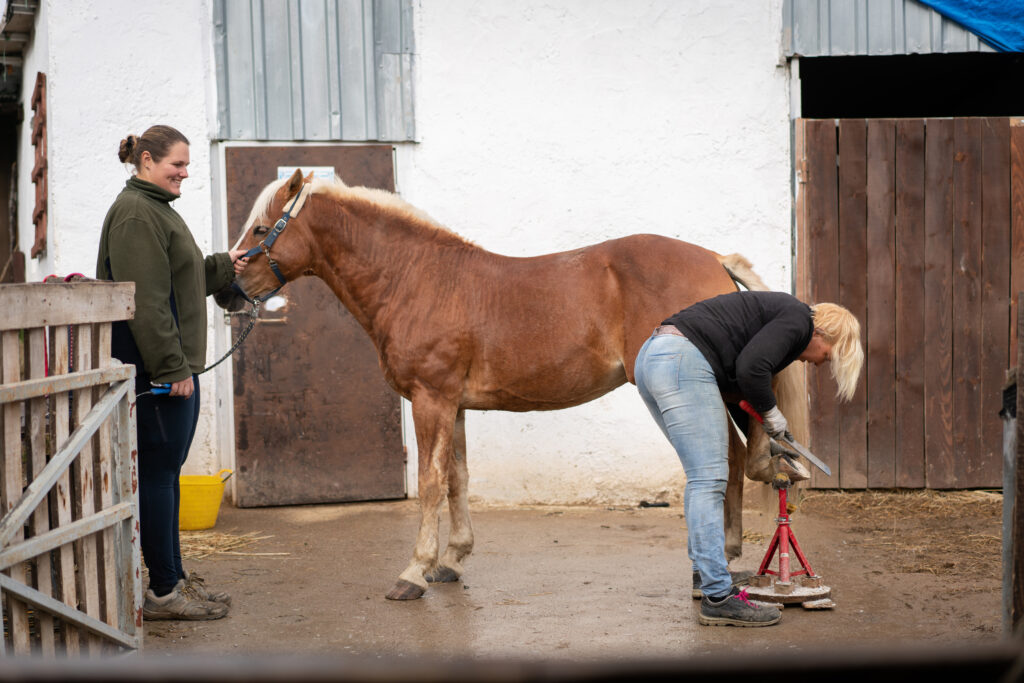Home > Horse Care > How to hold a horse for the farrier
How to hold a horse for the farrier
- July 8, 2024
- ⎯ EQUUS
Listen here:
Your farrier is hard at work, trimming and shoeing your horse. All you have to do it stand there and watch, right? Not quite. Holding a horse so that he stands quietly is a skill that can make you popular with your professionals, as well as making procedures safer for you, your horse, and the farrier. Here’s how to develop that skill:
Hold the horse, don’t tie him.
Tying, especially cross-tying, is not a safe way to restrain a horse unless he is calm, quiet and used to this type of restraint. If there is any chance that a horse might jump, pull back or resist, it’s much safer for an experienced person to hold the horse.

Position yourself properly.
Stand on the same side as the veterinarian or farrier, unless they tell you not to. Hold the horse with a halter and rope or shank that gives you good control, never with just a halter alone. It’s not necessary to hold a horse tightly by the head—many horses need a little freedom to balance up or to turn their head to see what’s going on. Always stay alert, on your feet, and be aware of the horse’s demeanor and also what the professional is doing—this is no time to sit down, scroll on your phone or otherwise let your attention wander.
Only hold the horse.
This isn’t the time to clip the horse’s muzzle hairs, pull his forelock or otherwise fuss with him. If a scratch on the forehead can help keep him calm, that’s fine, but you don’t want to engage in any activity that can distract you or annoy the horse.
Hold off on treats.
You may be tempting to bribe a fussy horse with treats—or reward one who is standing quietly— but that could create bigger problems if the horse become fixated or pushy. Unless it’s part of specific strategy you developed with your farrier, hold off on treats until the job is done.





